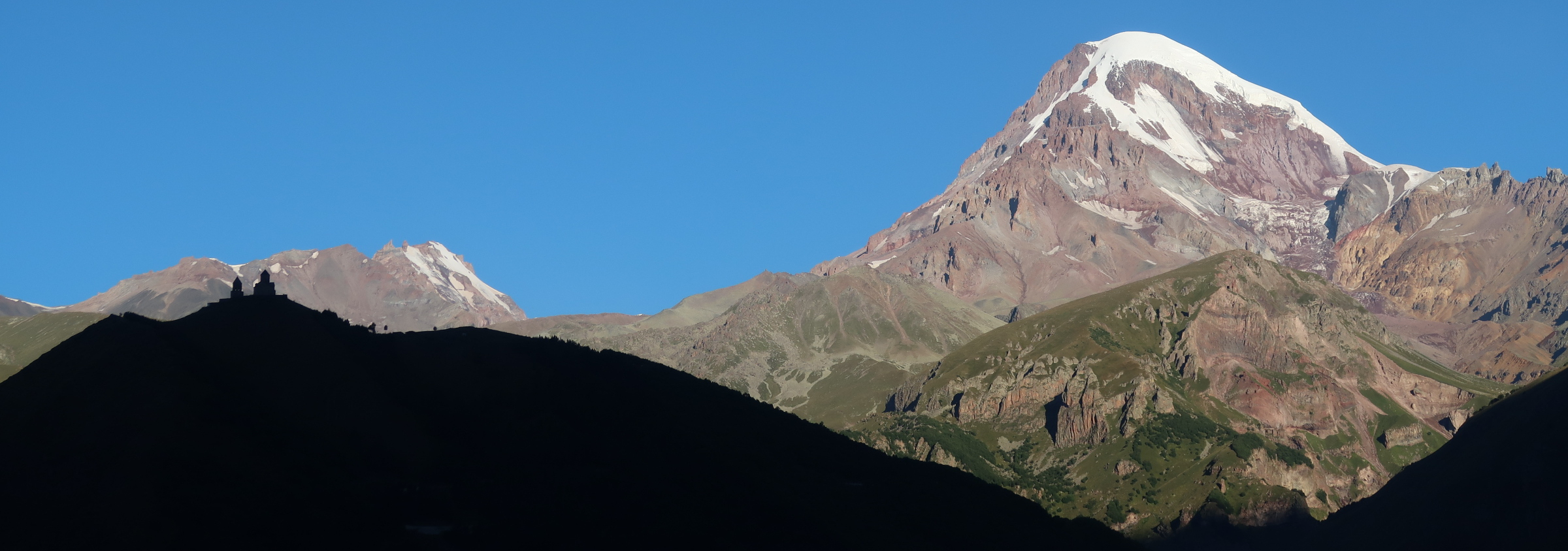New flights to Georgia
New flights linking the UK with Georgia are about to make this Caucasian country considerably easier to visit. When you get there, it's also very easy to get around and up into the mountains. Here we take a quick look at two parts of the country which can be reached from Tbilisi.
Words and photography by Olly Beckett

On Sunday 30 March British Airways will commence four flights/week between Heathrow and Tbilisi. Shortly after, on Tuesday 1 April, easyJet will begin flying twice a week from Luton to the Georgian capital. These new direct services open up a range of simple mountain breaks to any UK traveller within reach of London. I've picked out two very different regions which can both be visited by public transport or by good value tranfers.
Stepantsminda
From Tbilisi it costs less than £18pp for a group tour to Kazbegi. Along the E117 highway you'll join Russian, Armenian and Iranian trucks heading to the northern border, stopping off at various sights along the way, including the Ananuri Fortress and Gudauri viewpoint. When I arrived into Stepantsminda (aka Kazbegi) I headed straight to the Capra Hotel, flung open the curtains and stared at the snowy mountains across the valley. And then something spectacular appeared.
Although there was just a scattering of clouds, the few that blotted the sky had been hiding a very, very big volcano: Mt Kazbegi (5,054m). So large was this volcano that it dwarfed the mountains I'd just been admiring. It made the entire range seem out of perspective. Of course I immediately felt the need to hike up it.

I couldn't hike all the way up it, of course, not least because I didn't have my passport on me. Past the Gergeti Trinity Church and the Alti hut (a climb of about 1,300m) a sentry box appeared beside the path and a friendly Georgian soldier asked if I intended to go to Russia. "No way" came my emphatic response and he allowed me to continue up to the edge of Gergeti Glacier, a large obstacle should I have even wanted to cross the border.
This had been a hike combing views of valleys and mountains, a visit to an ancient church and the opportunity to touch the icy flank of a volcano. The next day I took a taxi to the remote village of Juta and embarked on another long hike; there really is a rich choice of trails in this region, but it's also worth coming here to sit in stylish hotels such as the Capra and just ogle the dramatic views.
Mestia
I'd wanted to fly with Vanilla Sky from Tbilisi directly to Mestia, but the airline's website is terrible and the friendly lady in the tourist office complained that even she was rarely able to snap up a ticket on these incredibly popular flights. So, to Plan B: an early train to Zugdidi (a pretty journey through the valleys of foothills, taking about six hours) and then a marshrutka - which is a minivan that operates like an unscheduled bus - all the way up a winding mountain road to Mestia.

Being so remote and difficult to get to, Mestia has mostly avoided rampaging armies over the course of history. It's in a region called Svaneti which is spiked with medieval towers that reach up to six storeys high, each owned by an individual family. In lieu of external violence these families created their own, with blood feuds rife in the region up until the 1990s. The towers were designed for defence and today you can climb up the inside of some, although rickety staircases aren't for the faint hearted.
All around Mestia and up the long road to Ushguli are numerous opportunities to hike, bike and horse ride. The Transcaucasian Trail passes through here and you could easily spend a week just in this region exploring all it has to offer. I can recommend staying at Old House which has its own medieval tower and offers a thick menu of exquisite Georgian cuisine (try it all: you can't go wrong).
In total it's worth dedicating two weeks travelling around Georgia's mountains and spending a couple of nights in Tbilisi at the beginning and end of your trip.

